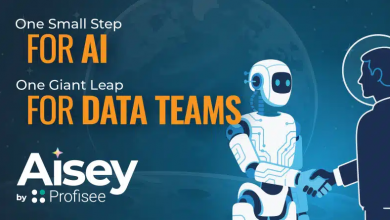TomTom Brings AI-Powered Talking Cars to Life with Azure
Azure AI powers the TomTom Digital Cockpit, a fully integrated, AI-powered, conversational automotive assistant that enables more sophisticated voice interaction with infotainment, location search, and vehicle command systems.
 TomTom is a keynote exemplar of how organizations can harness Ai to pioneer new digital business model innovations.
TomTom is a keynote exemplar of how organizations can harness Ai to pioneer new digital business model innovations.
They’ve partnered with Azure to enhance their in-car navigation systems by incorporating AI capabilities.
It was a natural evolution of the relationship for the two companies to collaborate on automotive solutions, especially on driving innovation for generative-AI-powered solutions.
Together they have developed TomTom Orbis Maps, which are built on TomTom’s AI-based mapping platform, and TomTom Digital Cockpit, an in-vehicle digital infotainment solution with cloud analytics.
AI Integration in Cars: The Digital Cockpit
Microsoft’s advancements in AI and the TomTom Orbis Maps power the TomTom Digital Cockpit, a fully integrated, AI-powered, conversational automotive assistant that enables more sophisticated voice interaction with infotainment, location search, and vehicle command systems. TomTom Digital Cockpit is enhanced by Microsoft Azure with Azure OpenAI Service embedded.
Azure Cosmos DB and Azure Kubernetes Service are also essential to the full-fledged architecture. With TomTom Digital Cockpit, drivers can communicate in a natural way with their vehicle and ask the AI-powered assistant—a generative-AI chatbot that is voice and audio focused—to navigate to a certain location, find specific stops along their route, and vocally control onboard systems to, for instance, turn up the temperature, open windows, or change radio stations. All with a single interaction. They can accomplish work tasks using the assistant while they wait for their electric vehicle to complete recharging.
Through the integration of AI technology, TomTom’s cars can now communicate with drivers, offering assistance, alerts, and even engaging in conversations. This advancement in automotive technology aims to improve safety and convenience for drivers. TomTom changed the way drivers reached their destinations. Its navigation system freed drivers and passengers from folding and unfolding maps, arguing over which way to turn, and stopping to ask for directions.
TomTom is expertly positioned to recognize that today’s drivers want to do more than follow the best route—and to assist them with easy-to-use and well-integrated solutions. They want, for example, to ask their car system to make dinner reservations after their last meeting, find the most appropriate charging station and a good lunch on their route, and control opening windows, changing the temperature, and other vehicle functions by voice.
The introduction of AI-powered talking cars brings numerous benefits, including improved navigation accuracy, proactive safety features, and enhanced user experience. Drivers can now interact with their vehicles in a more intuitive and efficient manner.
Future Implications
The development of AI-powered talking cars opens up a world of possibilities for the automotive industry. As technology continues to evolve, we can expect further advancements in autonomous driving, smart transportation systems, and seamless connectivity between vehicles and infrastructure.
The ubiquity of smartphones and software-defined cars plus the availability of 5G networks and the rise of electric vehicles have helped to transform the driving experience. Drivers expect to be able to use in-vehicle technology with the same ease and reach of their cellphones to gain information and participate in entertainment.



